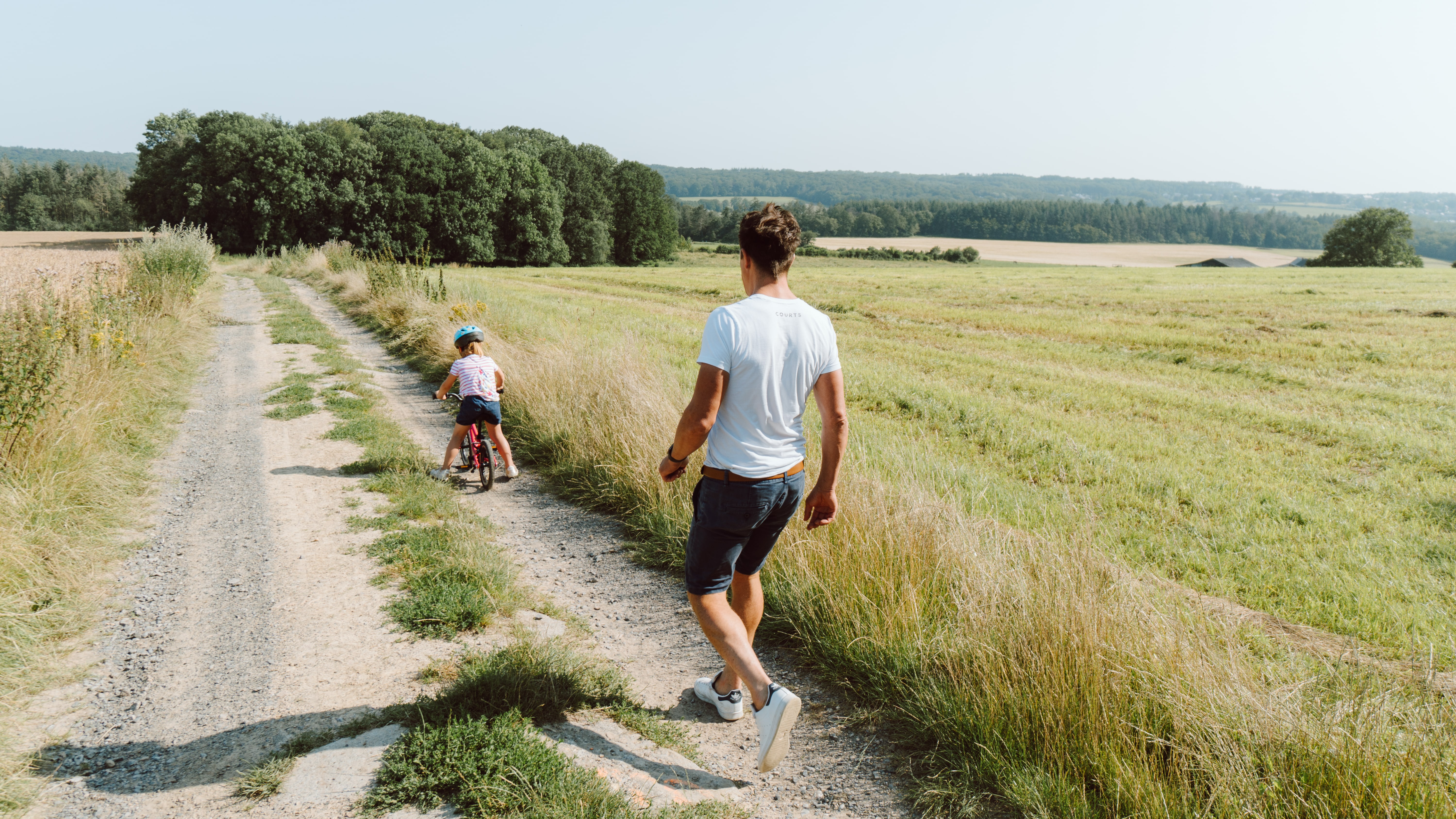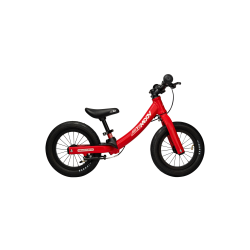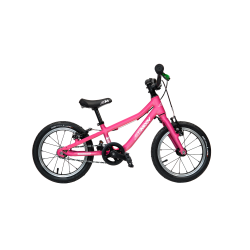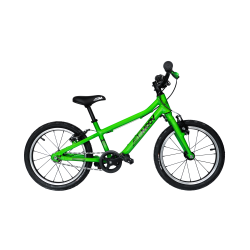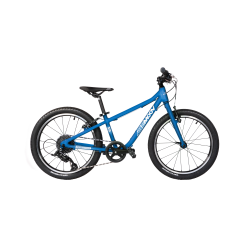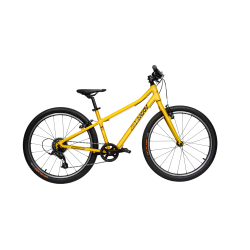Teach your child to ride without training wheels
Motor skills are not learned at the same rate by all children. Many variables come into play: neuromotor maturation first, but also anxiety and motivation…
In general, it is important to clearly distinguish the 3 stages of development before pedaling:
• With a low saddle, walking with your balance bike
• Then raising the saddle a little bit, learning to push one foot then the other to understand balance
• By adjusting the saddle to a sufficient height (legs almost straight if the feet are on the ground), then pick up the feet or place them on the footrests to master long moments of balance
The goal is for the whole process to click with your child. To do this, we simply have to help them overcome their apprehension, to understand the cause and effect link between the pressure on the pedals and the stability of the bike.
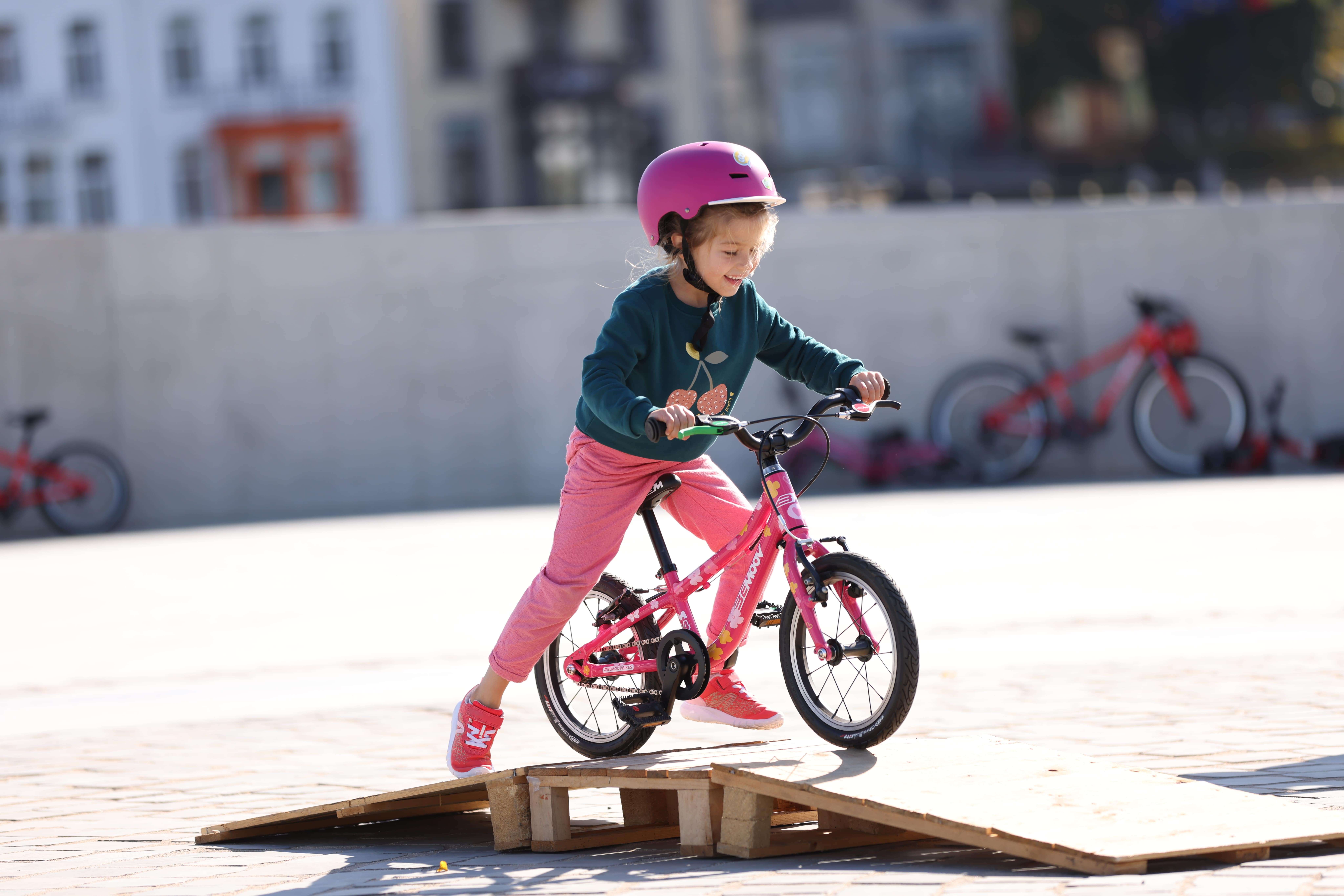
Why not recommend training wheels for learning?
Learning to cycle requires developing coordination and dissociation of movements, while maintaining balance. In the child's brain, the voluntary motor skills system will try to provide a plan of action: Which muscles? What joints?
In which order? For how long? This is called motor programming, which requires a lot of attention when learning.
Training wheels will "skew" learning, since the actions learned will have been made without regard to balance.
Likewise, when your child takes their first turns, training wheels will prevent them from experimenting with another basic principle of the bike: turning is not done by just turning the handlebars, but also by leaning in the desired direction.
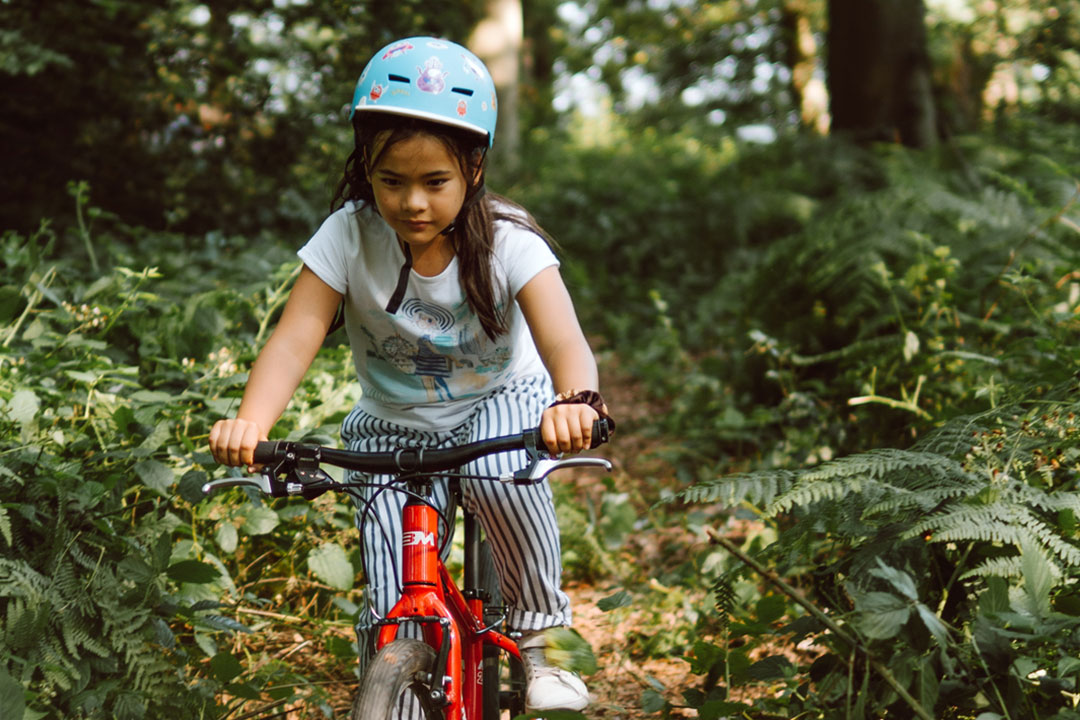
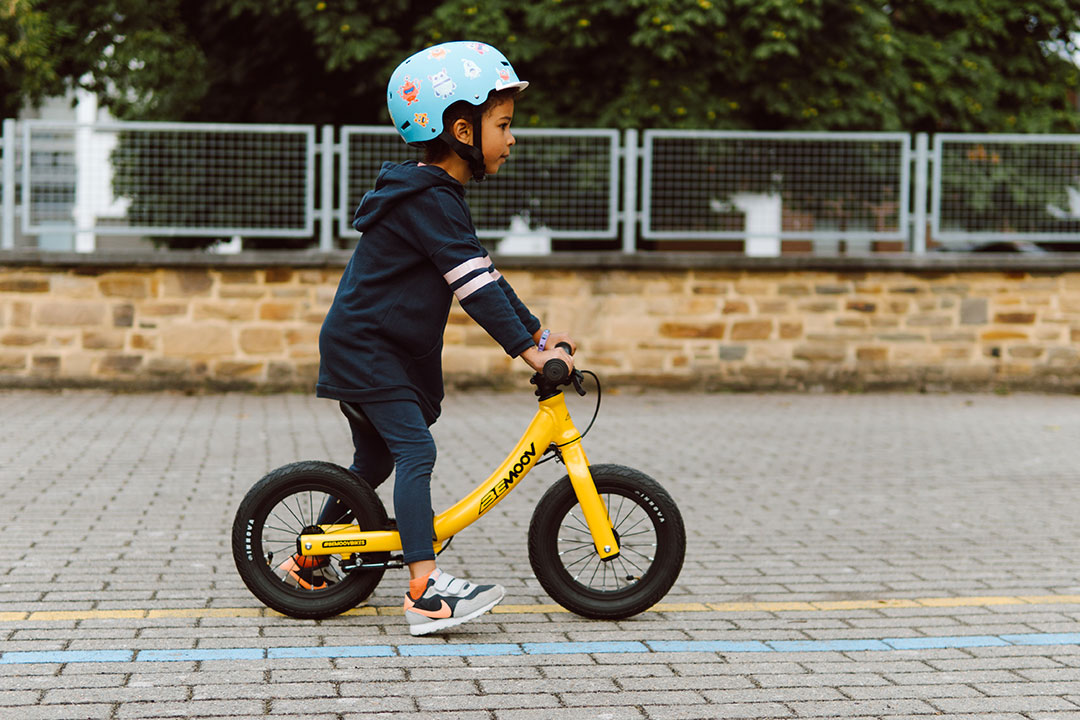
A dose of stability on a balance bike
Balance is without a doubt the foundation for learning to cycle.
Depending on the age of your child, the best solution is to go for a quality balance bike (not a toy) or if your child is already too big for a balance bike, simply remove the pedals from their current bike.
Choose a place where the ground is flat or very slightly sloping, so that your child can walk while sitting on the bike, with a very low saddle (step 1).
Then, with a little speed, they can move on to step 2, which is lifting their feet to find their balance without being afraid of falling.
From this point on, consider gradually raising the saddle height so that little by little the child loses the reflex of placing his/her feet too automatically on the ground.
Should you hold or release your child?
Letting go of your child before they feel ready may block them.
It’s often said, what is better is the enemy of what is good, and this is why balance bars are actually a terrible idea: they will throw children off balance and disrupt their sense of balance.
It is therefore best to reduce your pushing effort gradually, supporting the child's back just enough to help him/her find the necessary momentum to find his/her own balance.
You will be amazed at how quickly it happens!
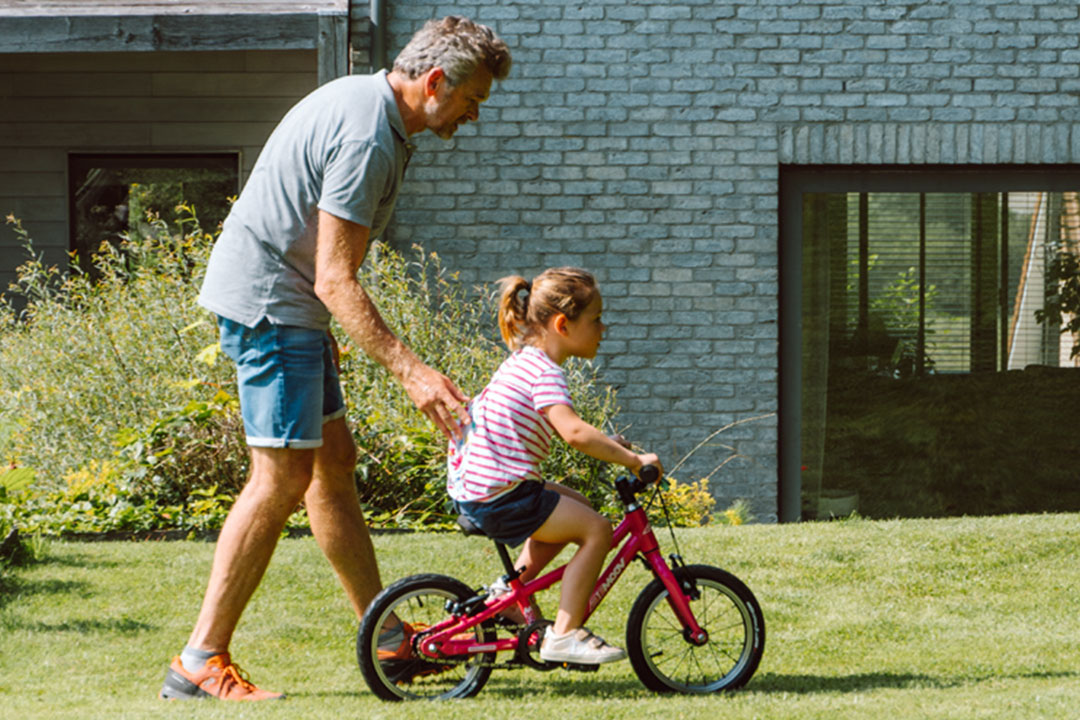
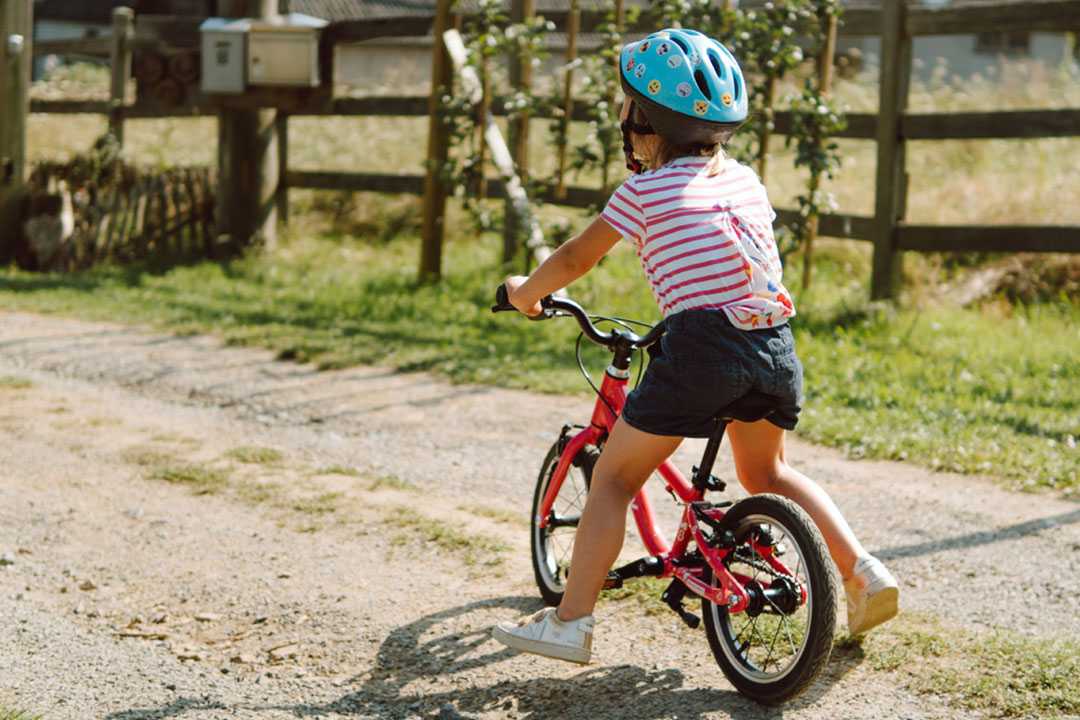
Minimum speed on a balance bike
When your child feels comfortable and multiplies the periods of balance without putting his/her feet on the ground, the child can move on to the last step before pedaling: place his/her feet on the footrest, which should be fitted to the right balance bikes. This will help the child gain confidence in his/her ability to manage balance for an extended time. From that moment, the child will be able to switch to pedaling naturally.
This stage is the ideal time to start mastering the use of the rear brake (found on good balance bikes). It will never be too early to control your speed at all times or learn to stop at any time without putting your feet on the ground.
Braking to stop without wearing out your shoes
You can help your child to progress by choosing a location where the ground is level, or on a downhill slight slope.
Your child can then easily start to push with the feet (like on a balance bike) for a few seconds, before lifting them up to put them on the pedals.
At this point, as with walking, the child will quickly understand that putting one foot in front of the other is the equivalent of pushing one foot and then the other on the pedals to ride a bicycle.
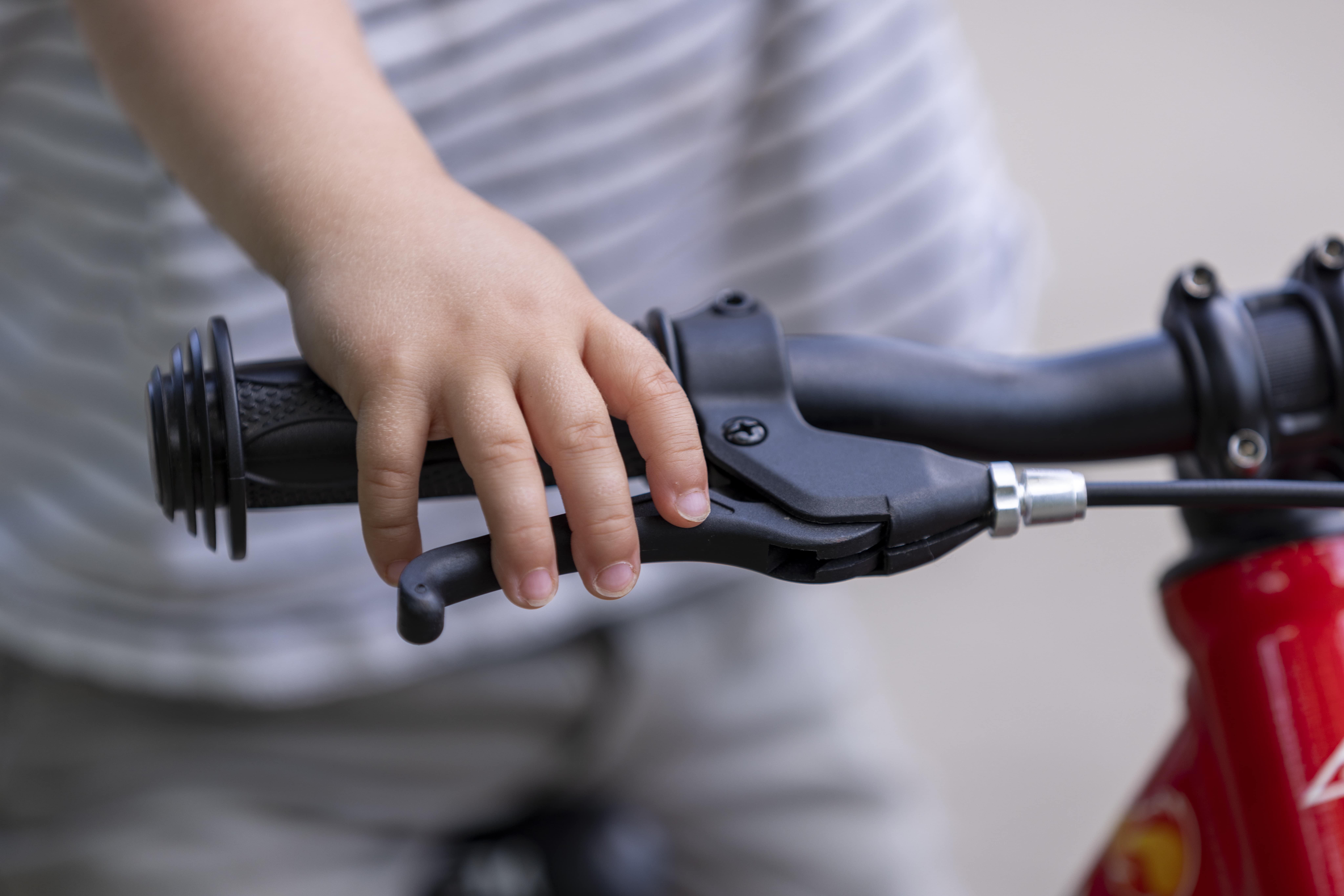
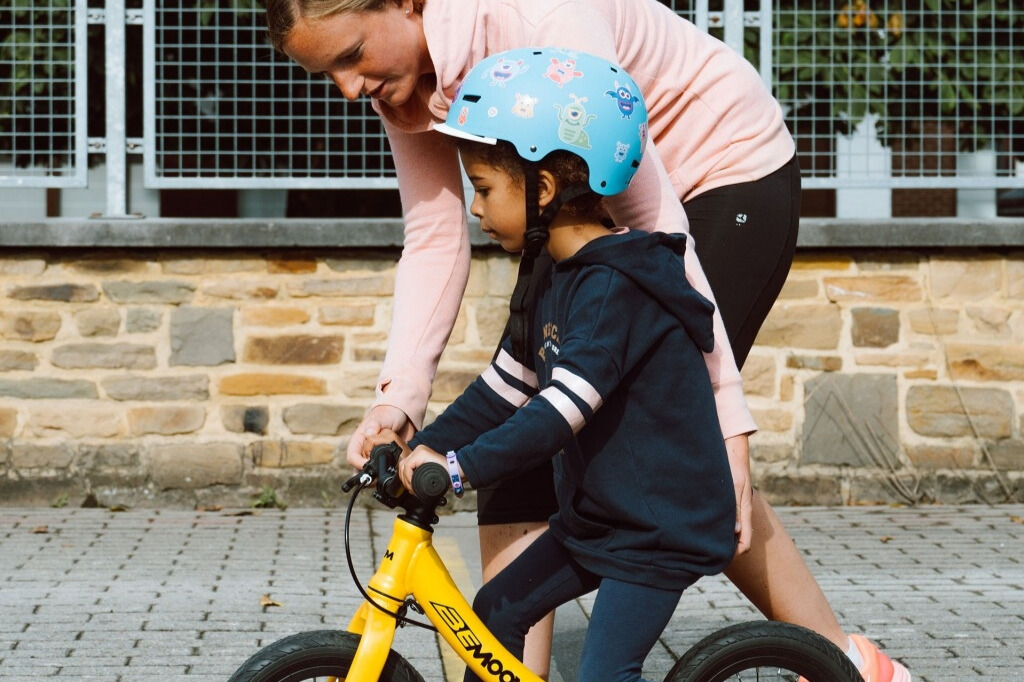
The standing start on a bike
To begin riding without losing balance, your child just needs to have the confidence to get started.
So the best is to help him/her get started by pushing lightly until the child can move forward on his/her own, and the pleasure begins to exceed apprehension.
The child will then have to learn how to "start" when standing still. To do this, teach the child to start by positioning the front foot above the level of the crank axle.
This way, he or she will have more strength to complete their first pedal stroke and gain enough momentum to get balanced on the bike and ride off on their own.
Beautiful paths by bike
At this point, don't forget to remind the child that the bike goes where you look. This is very important in teaching your child not to oversteer or turn the handlebars too far.
For this, you can, for example, create courses with turns wide enough to be covered at a certain speed.
Your child should now understand that turning on a bike (at a certain speed) is NOT done by turning the handlebars, but by leaning slightly towards where you want to go (left or right).
